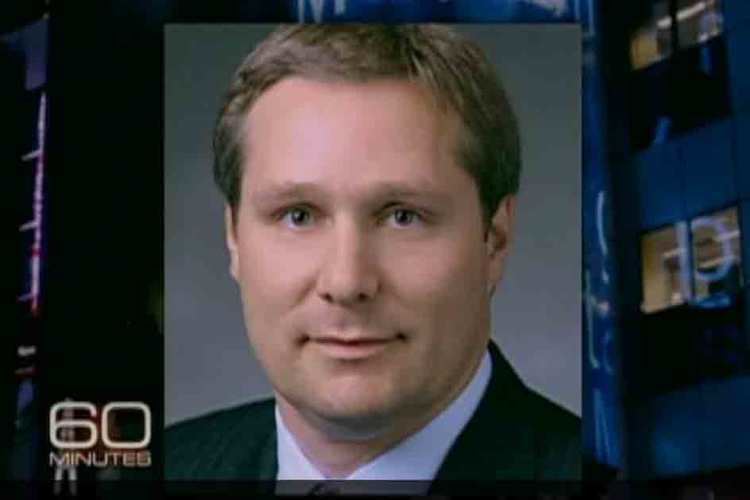Nationality United States Occupation Trader, consultant | Known for Trading losses Name Howie Hubler | |
 | ||
Similar Steve Eisman, Michael Burry, Ellen Alemany Alma mater Montclair State College | ||
Howie hubler
Howard Hubler III, known as Howie Hubler, is an American former Morgan Stanley bond trader who is best known for his role in the single largest trading loss in history. He made a successful short trade in risky subprime mortgages in the U.S., but to fund his trade he sold insurance on AAA-rated mortgages that market analysts considered less risky, but also turned out to be worthless, resulting in a massive net loss on his trades. His actions directly resulted in the loss of roughly US$9 billion during the 2007–08 financial crisis.
Contents
Early life and education
Howie Hubler was born and raised in Boonton New Jersey, United States. He was the son of a real estate broker. Hubler attended college at Montclair State College, where he played American football.
Career
Coming on board with Morgan Stanley sometime in the late 1990s, Hubler worked in Morgan Stanley's Fixed Income division as a bond trader. Among his peers, he had a reputation as a hothead and a bully who responded to critiques with strong anger. In 2003, Morgan Stanley created a proprietary credit default swap (CDS) for the purpose of shorting bad subprime mortgage bonds. When a group was being formed in 2003 to short subprime mortgages, Hubler co-opted management of the group and was placed in charge of the team. After being met with early successes shorting subprime mortgage bonds as well as doing well selling bonds, Hubler was promoted to run the newly created Global Proprietary Credit Group (GPCG) in 2006.
9 billion dollar loss
The GPCG had positioned itself within Morgan Stanley as a group that would provide highly profitable deals very quickly. Because of the nature of the credit default swaps, however, the GPCG was required to post premiums to their counter-parties until such a time in which the bonds were considered to be in default. Because the group was paying out a large amount of money to keep the CDS trades in place, their profitability was quite low. To finance their operations, Hubler instructed his traders to sell credit default swaps on $16 billion in AAA-rated collateralized debt obligations (CDOs). Hubler and the GPCG bought $2 billion in credit default swaps on extremely risky mortgages, and sold $16 billion in what they believed were safe CDOs. Because of the opaque nature of the CDOs on which they were selling credit default swaps, Hubler and his group did not realize that the CDOs they were insuring contained similarly risky subprime mortgages to the bonds they were shorting. Because of this, Hubler repeatedly assured his company officers and risk management teams that their position was very secure.
After threatening to quit in a dispute over pay and organizational structure, Hubler was paid $25 million for his performance in 2006 and was expected to make significantly more in 2007 if performance continued as it had. However, after the dispute was resolved, the risk management team asked the GPCG to stress-test their portfolio. At a default rate of 6% (the previous historical high), the portfolio remained solvent. When pushed to a hypothetical default rate of 10%, however, the groups projected profits of $1 billion turned into a projected loss of $2.7 billion. Hubler argued vociferously that such default levels were unlikely and would never happen.
As the housing market began to collapse and defaults on subprime mortgages began to mount, disputes between Hubler's group and their counterparties began to emerge over the value of the bonds and CDOs that had been subject to credit default swaps. When notified by the counterparties that the value of the CDOs had dropped to levels warranting a payout, Hubler disagreed on the assessment stating that the GPCG's models indicated that the CDOs were worth most of their expected value. Had Hubler conceded the drop in value of the CDOs earlier, the GPCG's losses may have been contained to a relatively small fraction of their overall risk. However, because of his reluctance to follow the procedures outlined in the credit default swaps, GPCG and Morgan Stanley's position worsened over the coming months. By the time upper management intervened and removed Hubler, GPCG and Morgan Stanley were liable for nearly 100% of the expected losses. Overall, Hubler's group managed to sell $5 billion worth of the CDOs they had before the market collapsed and realized another $2 billion in revenue from their original credit default swaps, putting the overall losses for his group at $9 billion. Morgan Stanley would lose $58 billion in the financial crisis overall.
After Morgan Stanley
Once Morgan Stanley's management and risk assessment teams fully comprehended the magnitude of the damage, Hubler was presented with the choice to resign rather than face termination in October 2007. Upon his exit, he received $10 million in back pay.
In 2008, Hubler founded the Loan Value Group, a company that collaborates with mortgage lenders to assist homeowners who owe more on their mortgages than their homes are worth and are contemplating strategic default.
Hubler has refused all requests to be interviewed on the topic of his time at Morgan Stanley.
